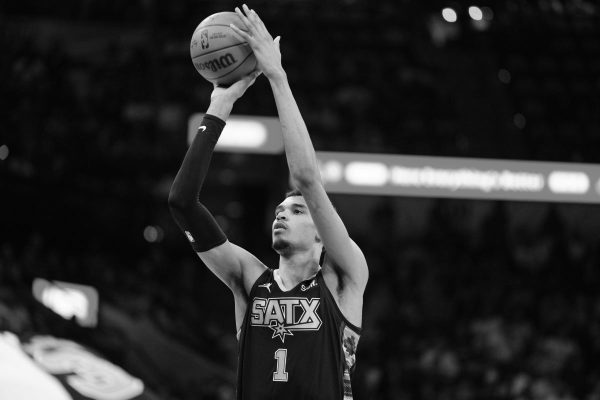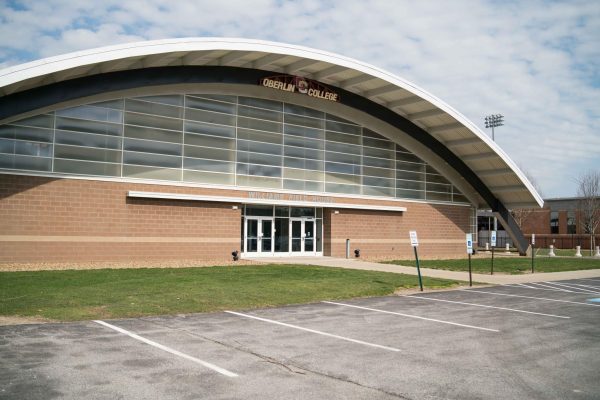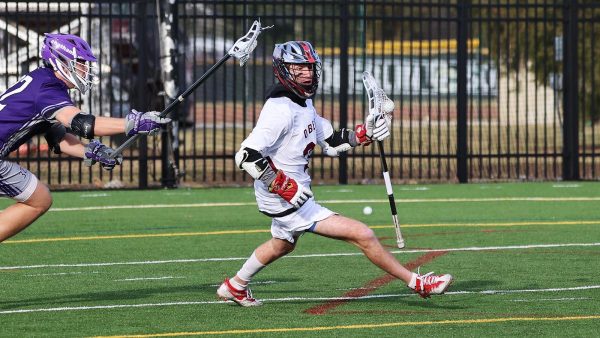Shohei Ohtani Defies Asian-Athlete Stereotypes in MLB Debut
Major League Baseball’s opening day is not only a signifier that spring weather is fast approaching; it is also a celebration of clean slates and the purest of hopes for the oncoming season. Baseball franchises and fans alike approached the day with full hearts and the mentality that anything could happen this season. But while there are 30 teams in the MLB with 25-player active rosters that all competed on this day, there seemed to be a massive spotlight shining on a single member of the league: the Los Angeles Angels’ Shohei Ohtani. Not only is he an instant star in the MLB, but he is also just as important to the Asian athletic community in the U.S. and an inspiration to me as an Asian-American sports fan.
Standing at 6’4” and weighing 213 pounds, the 23-year-old Japanese rookie was an athletic icon back in Japan. He made his professional debut at the age of 18 for the Hokkaido Nippon-Ham Fighters, a team known for churning out well-known MLB pitchers Yu Darvish and Hideki Okajima. However, Ohtani seems to be a different case from his Japanese predecessors. In fact, he is different from most players all throughout baseball history. In these past two weeks, Ohtani became the first MLB player since Babe Ruth in 1919 to play in both a non-pitching role and as starting pitcher within the first 10 games of the season. In mores straightforward terms, Ohtani is a two-way player, serving the Angels as both a hitter and pitcher. But unlike Babe Ruth — who decided to focus on batting and almost entirely scrapped pitching after 1919 — Ohtani hopes to maintain his dual role throughout his entire career.
During his five-year stint with the Fighters in Japan, Ohtani managed a 2.52 ERA and averaged 10.9 strikeouts per nine innings, all while hitting .286/.358/.500 and snagging the Pacific League MVP when he was just 21 years old. He was immensely sought-after by MLB teams throughout his final season in Japan and had the option to leave and join the big franchise Los Angeles Dodgers. However, Ohtani carefully chose to join the comparably smaller-franchise Los Angeles Angels after a month-long contract negotiation with the Fighters.
While it is too early to say whether he will succeed more in batting or pitching, Ohtani made his official MLB debut as a designated hitter and whacked a single. He exhibited his pitching prowess a few days later — throwing one of the nastiest sliders I’ve ever seen and masterfully playing with pitch speeds that ranged from 75 mph to 95 mph — and clinched his first win. While the debuts calmed Angels fans everywhere after a less-than-impressive spring training performance, they also inspired scrutiny and debate — side-effects of being under the microscope of both national and international media attention.
The discourse around Ohtani’s first appearances with the Angels were predictably mixed and extreme — mixed because there were as many negative reactions as there were positive, and extreme because this feedback was formulated after a mere two performances. Ohtani can or can’t bat, can or can’t pitch well, should or shouldn’t go down to the minor leagues, and will or will not be the MLB’s next “big thing.” But in a sport with 162-game seasons, one at bat has never really been a deciding factor. After hitting his second home run of the season — this time against 2014 American League Cy Young Winner Corey Kluber — on Wednesday, he seems to be finding his rhythm.
If you go to ESPN.com and click on the MLB home page, you’ll see a tab named “Ohtani Tracker” next to the standings, scores, and season previews. There isn’t such a tab for Aaron Judge, the New York Yankees poster-child and AL MVP runner-up last year, or even Mike Trout, the two time MVP who is projected to finish in the top 10 Wins Above Replacement ratings of all time when he’s done. So why do so many people care about a 23-year-old rookie who hasn’t even played 10 games yet?
I can’t speak for all baseball fans, but Ohtani has rapidly become an important figure in my life since opening day. He’s a little different than the average 6’4” mammoth of a two-way MLB baseball player, much like how I am much different than the average St. Louis Cardinals fan. Ohtani is an Asian baseball player — just like how I am an Asian-American baseball fan — and he is not just trying to dominate this league. He’s doing something that hasn’t been done in 100 years, and the last guy to do it was Babe Ruth, who is considered to be the greatest baseball player of all time. Ohtani is also accomplishing this all while living in a foreign country with a starkly different culture and racial discrimination against Asians. These anxieties are a familiar narrative to Ohtani’s Asian audience. His story makes me think of my own grandparents, who left South Korea to live in the United States in the 1950s and faced similar challenges. So when I’m watching Shohei Ohtani, I am looking at a representative of a diaspora I proudly belong to — and this is despite being a die-hard St. Louis Cardinals fan since birth, which dictates I should not love an Angels player as much as I love Ohtani.
Asian players make up a very small percentage of the MLB. As of recent years, they are around two percent of the league. In other words, I watch a lot of baseball but see few players that look like me — an East Asian. In my experience, an average baseball fan either does not know a single Asian baseball player or manages to solely cite Ichiro Suzuki. I will always hold the highest regard for Ichiro Suzuki for both his contributions to baseball and for embracing his status as an Asian pioneer, but he alone is not enough. If anything, he is evidence that I should be able to look forward to even more celebrated Asian baseball players like him in the present and near future. Ichiro was a tactful hitter and his 3,000 hits will undoubtedly land him a place in the Hall of Fame, but Ohtani is potentially a home-run power hitter — therefore defying the prevailing stereotype that Asian players are only good for pitching or playing small ball.
Ohtani seems to be the beginning of this exact transition that I have been waiting for, and I couldn’t ask for a more qualified representative. He is proving that Asian ballplayers can be sluggers who rake home runs with Judge or Trout, and they can even be two-way players like Babe Ruth. While East Asian pitchers seem to be a hot commodity for MLB franchises, East Asian sluggers are far less common.
Perhaps the most thrilling aspect of Ohtani, specifically to an Asian fan like myself, is that he is an exciting player to all baseball fans regardless of his race. He is not being given this staggering amount of attention because he might be a great Asian baseball player. Ohtani might be a great baseball player in general, Asian or non-Asian. Looking at his position now, he stands equally with his Angels, American League, and MLB counterparts, thankfully making his Asian status the least remarkable thing about him.






